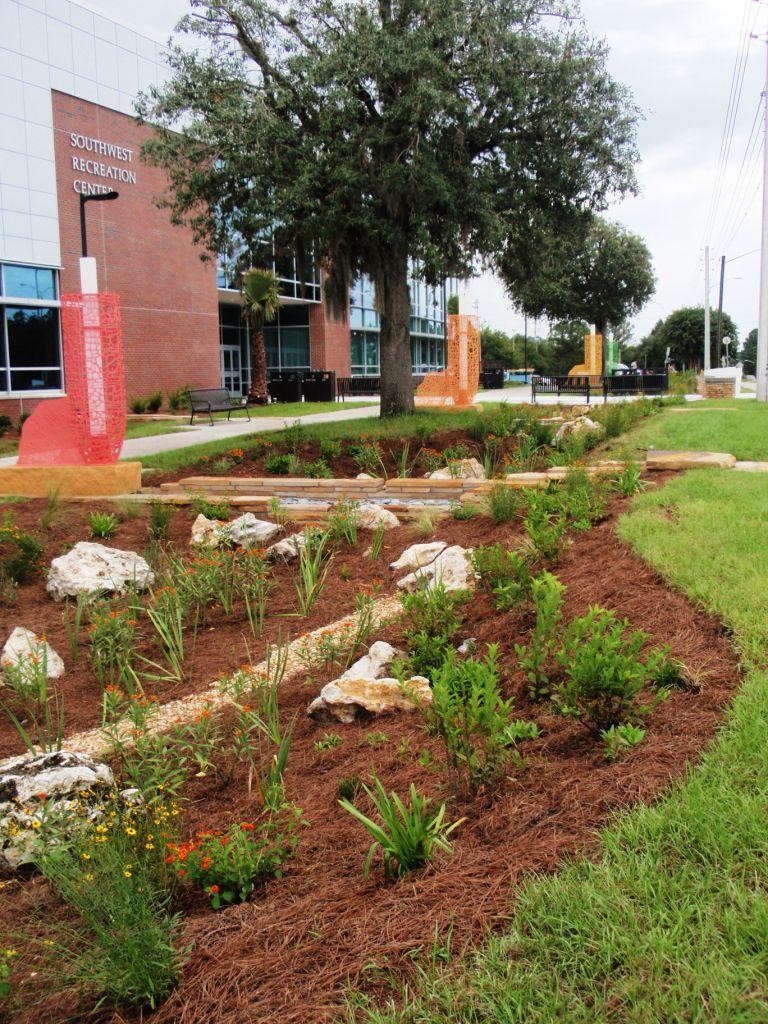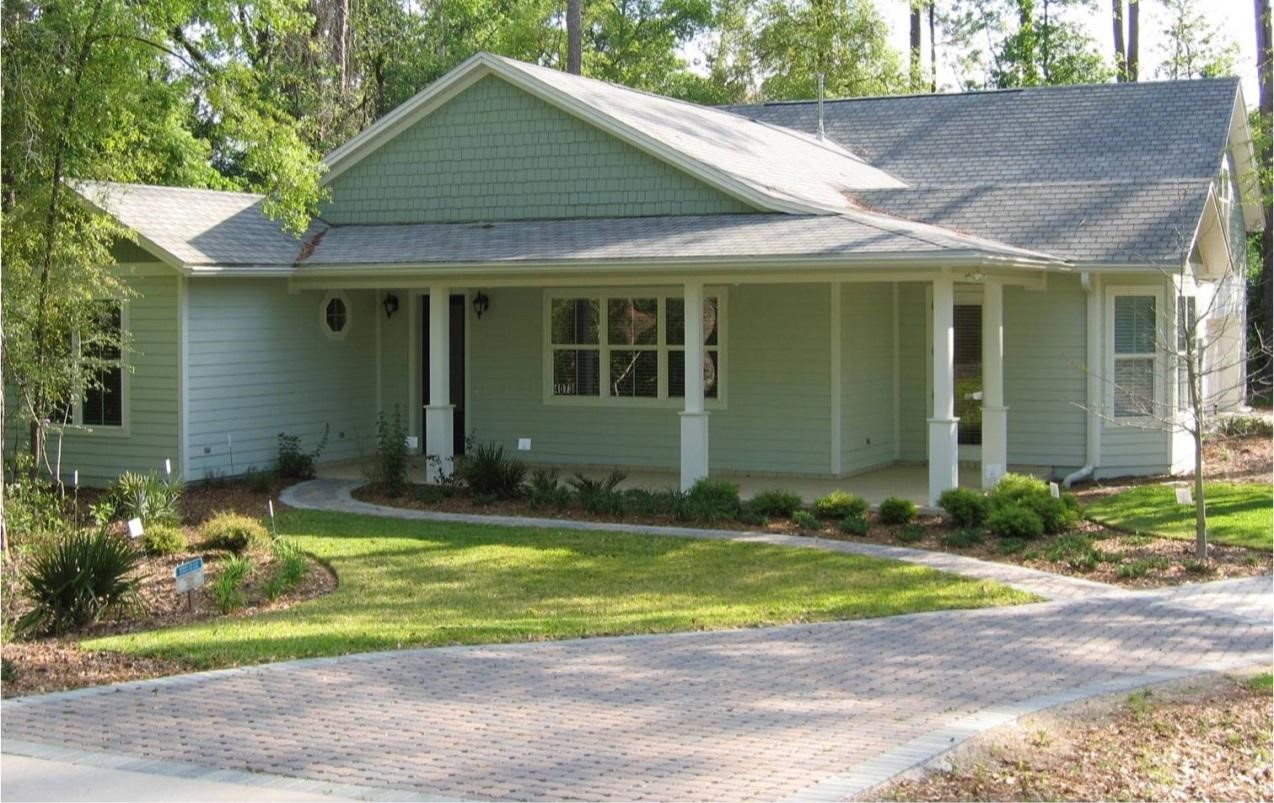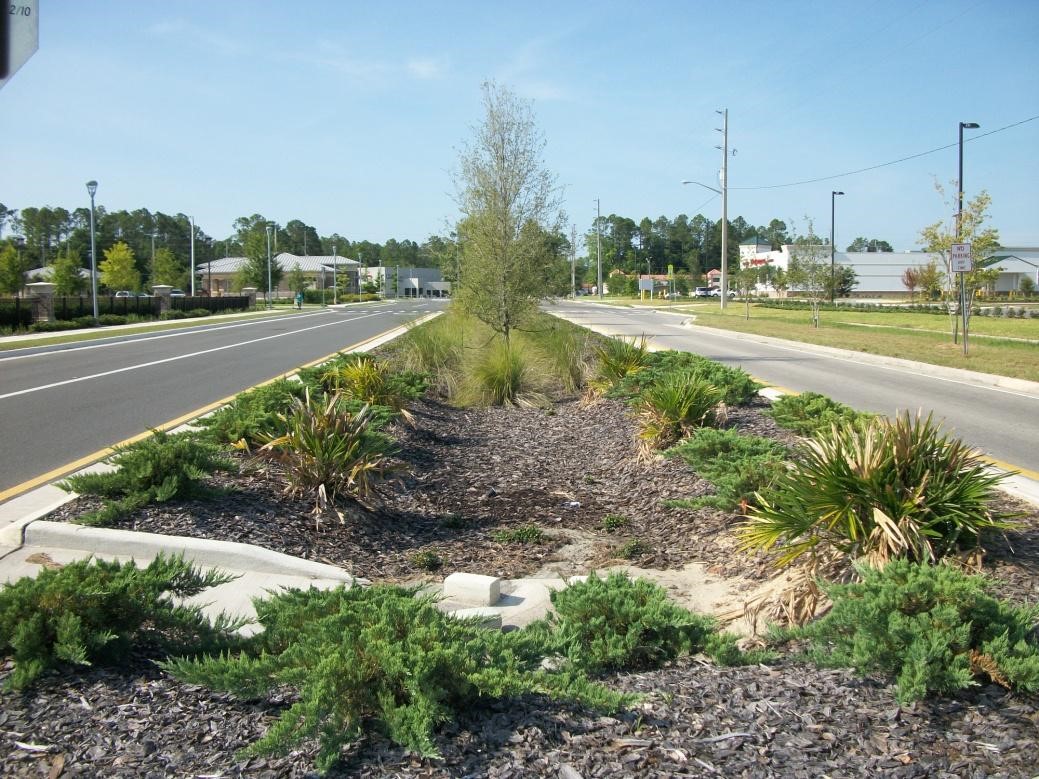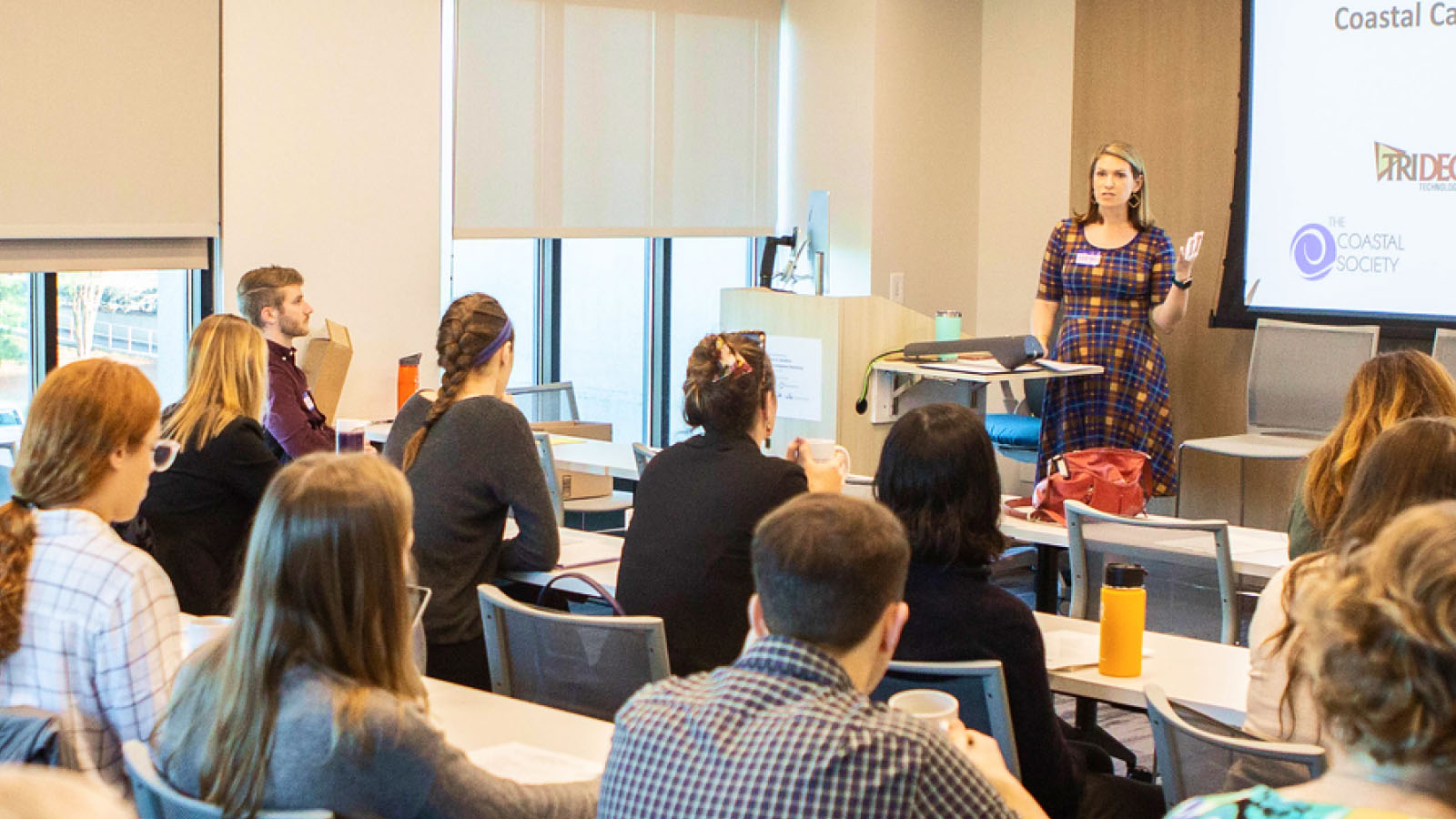The Takeaway: Implementing green infrastructure holistically at all scales to enhance resilience to hazards and future climate change impacts.
Overview
As the Natural Resource Program Manager for Alachua County, Florida, Stephen Hofstetter wanted to answer the question, “what is the issue our communities will have moving forward with resiliency, including future climate impacts, and how will they handle extreme weather events?”
In the last few years, Alachua County has been experiencing some of the most extreme storm events they’ve ever seen. In 2017, they recorded the highest rainfall in history, exceeding the previous year’s rainfall by eight inches. The average rainfall had been around 50 inches per year, but in 2017, they got 70. When Hurricane Irma hit, the area received 16 inches in a two-day period. While Alachua County is not a coastal county and therefore doesn’t have to worry about sea level rise, they do have to worry about extreme drought and extreme rain events.
Stephen, along with other county staff members and local leaders, knew that the use of green infrastructure would be a critical component in helping Alachua County communities become more resilient to these hazards. He also understood that that they needed to look at using green infrastructure holistically—protecting natural areas at all scales—including the overall landscape, parcels and neighborhoods, and individual homeowners. This became the objective of Alachua County’s Green Infrastructure Investment Strategy.

Lessons Learned
- Don’t wait until the end of your process to get community involvement. Provide information to people as early as possible, and don’t be discouraged if you’re not getting input right away. Keep going.
- Timing matters. Be ready with a plan so that when there’s a window of opportunity, you can jump on it. For Stephen, Hurricane Irma was the opportunity to implement a countywide wetland conservation strategy. These hazard events are damaging, but can ultimately lead a community in the right direction.
- Connect people’s values to green infrastructure benefits. Take what your community already knows is important and connect those values with your project. For example, residents know they need to be careful in how surface water runoff is treated because it will be their drinking water soon.
- Understand the big picture, but start small to break barriers. Show green infrastructure examples so that people better understand how these systems work and their value. Don’t expect to accomplish everything overnight.
The Process
The first steps in Alachua County’s new green infrastructure strategy were to look at the positive actions already underway, to protect natural areas at different scales, and to make changes where needed.
Landscape Scale
Alachua County was using land-use planning and land acquisition to ensure the protection of the natural areas that can reduce hazard and climate impacts. The county’s comprehensive plan had identified critical natural systems through its GreenPrint, and the protection of these areas was supported by the Alachua County Forever Land Conservation Program. When it came time for the comprehensive plan to be updated, Stephen and his colleagues worked with community members to identify opportunities for improvements to existing efforts at the landscape scale that would aid in resilience. They identified land development resource protection standards and codes to further protect the critical natural systems in the GreenPrint. The codes were adopted in 2006, and they’ve seen positive results since.
When a project is proposed at this scale in green field areas, Stephen asks himself two things: is it worthy of putting on this land and removing what took hundreds of years to create, and is it consistent with county plan? The county policies instead encourage redevelopment within the urban growth boundary to minimize impacts and to provide additional opportunities for green infrastructure at the site scale. Stephen tries to remember that with each project requested, they are driving how their communities will look in the future.

Neighborhood and Parcel Scale
At the neighborhood and parcel scale, Alachua County created land development codes containing a list of standards for encouraging low impact development for different land use densities. To make this successful, they had to get developers on board. They had learned to involve developers and long-term maintenance staff from the beginning and to incorporate their input throughout. As a result, Stephen and county staff members ended up removing ordinance and code language that was too restrictive and instead built in flexibility to make it easier for them to try these new techniques. They then created incentives to get examples on the ground and build momentum.
They had been working with developers on this for over ten years, providing training for them through the University of Florida that included tools and models that allowed developers and consultants to see the types of low impact development available to them, and how they work to manage stormwater. The trainings have opened developers’ and consultants’ minds to the benefits of natural stormwater techniques.
Now, when a new development project comes in, code requires that 20 percent of the site be set aside as open space. If this isn’t viable for developers, they can implement low impact development to get credit for the open space areas they weren’t able to conserve. Many developers are using these techniques, such as bioretention and rain gardens, to enhance the stormwater systems and increase their development potential.
At this scale, maintenance of low impact development is a challenge. While the developer is responsible throughout the construction process, maintenance responsibility then shifts to the homeowners’ association. Stephen and his colleagues try to help the associations see that maintaining these systems will save them money over the long term. He is also trying to find new landscapers who encourage less mowing and more maintenance of native species, but, he points out, “It’s hard to explain to traditional landscapers that if they stop mowing and blowing they could actually save money.”
Alachua County staff members are also identifying common areas throughout communities that are being mowed unnecessarily, and are trying to remove these areas from mowing programs. This will allow them to transfer the cost savings to maintaining wild areas. “Signage is hugely important for this to work,” Stephen says. “People initially think the county or land manager is being lazy, so we have signs saying that the areas are ‘re-wilding.’”
Engaging Community Members
The district and flood commission held public meetings to hear input from anyone who could be impacted during flood events. During these meetings, they talked with community members about how streams work and demonstrated what a reclaimed floodplain looks like, showing how these restoration efforts would not damage property or devalue businesses.
Once community members started seeing potential results from different floodplain restoration projects, they decided it was time to take action.
West Brook Site Restoration
When Walton experienced a major flood in June 2006, the river overtopped its banks and water flowed freely through the village. A floodplain on the right bank, filled in and therefore unable to provide flood storage during the event, became known as the West Brook site. The restoration project aimed to reclaim the floodplain by removing fill and grading it to the right elevation and slope to allow water to spread out over the area, instead of overtopping the banks and impacting nearby businesses. The county district worked closely with the Village of Walton, the Open Space Institute, and New York City Department of Environmental Protection to acquire, design, and restore the area.



Individual and Household
At this scale, education and social marketing is key. Alachua County teaches and encourages residents to use natural landscape techniques to reduce the use of nutrients that go directly into the aquifer. “Since our community members understand that impacts to the aquifer directly affect their drinking water, we’ve been successful at making the link to stormwater runoff and flooding issues,” Stephen says.
Alachua County has also been working with schools through an Environmental Protection Agency grant to put in rain gardens and rain barrels, along with signage. Almost every school in the county is engaged, and the students have not only been helping with the green infrastructure, but also have been submitting artwork for an annual Earth Day calendar that includes natural resources and environmental challenges. “We’re hoping to build a strong environmental ethic as the kids grow up,” Stephen says, “and hopefully they’ll stay in our community.”

Next Steps
“We aren't done yet!” Stephen says. “We are constantly looking for new and better approaches.”
Currently, Alachua County is working on enhancing its stormwater code by involving developers in creating a new ordinance that would require—not just incentivize—improved stormwater management and low impact development in all development projects. Staff are studying the economic and ecological benefits of enhanced water quality to inform this work.
Since Alachua County is a charter county, it can set requirements for water and air protection. The county recently passed a new ordinance to set minimum requirements to protect its wetlands, increasing the buffer distance to developed areas and implementing an avoidance policy, making it very difficult to impact wetlands. Stephen is just beginning to implement this ordinance, and is optimistic about its impacts. He believes that the protection of wetlands is the most critical component of the county’s resilience to climate change.
